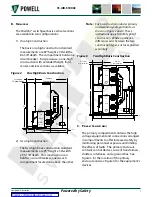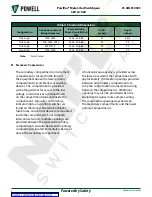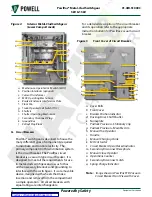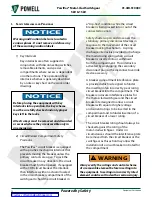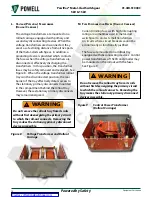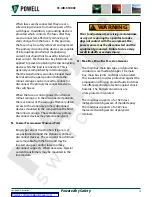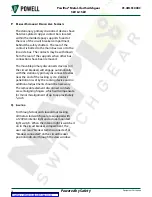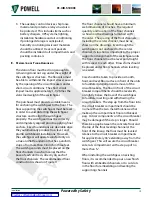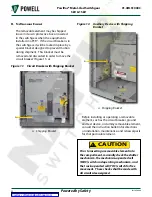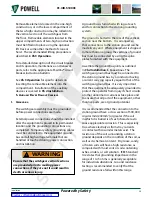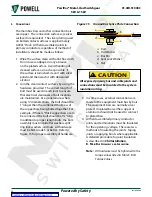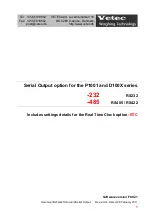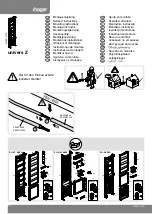
Powered by Safety
®
11
Equipment Description
01.4IB.51000C
h. c
IrcuIt
B
reAker
r
AckInG
m
echAnISm
NOTICE
When the circuit breaker main closing spring
is charged, withdrawing the secondary
disconnect plug will cause this main closing
spring to discharge.
The circuit breaker may be placed in three
distinct positions within the circuit breaker
compartment of the switchgear:
• Disconnected Position
• Test Position
• Connected Position
In the “disconnected position” the movable
primary disconnects of the circuit breaker are
disengaged and separated at a safe distance
from the stationary primary disconnecting
devices located in the compartment. A metal
shutter covers the openings of the stationary
primary disconnecting devices which prevents
contact. In this position, the secondary
disconnect devices and control contacts are
disengaged.
In the “test position”, the primary disconnecting
devices are disengaged and the shutters are
closed. The secondary circuits are completed
by inserting the secondary disconnect plug
(switchgear) into the secondary disconnect
receptacle of the circuit breaker. Now the
circuit breaker may be electrically operated
without affecting the primary circuit.
Note:
At this time the circuit breaker is in
the same physical location as the
“disconnected position”.
In the “connected position”, the movable
primary disconnecting circuits and stationary
primary disconnecting circuits are engaged.
The shutters are open and the secondary
circuits and control contacts are completed.
Interlocks deter the movement of a circuit
breaker from one position to another unless
the circuit breaker is tripped open. The
interlocks also deter closing the breaker
between positions.
The secondary disconnect plug is an umbilical
cord device. This multi-pin plug is located at
the end of a cord attached to the top of the
compartment. In order to rack the breaker into
the compartment this plug must be inserted in
the secondary disconnect receptacle. Once the
plug is inserted and the breaker is racked past
the “test position”, the plug is held captive and
cannot be removed from the breaker.
For complete instructions on inserting and
withdrawing the circuit breaker in and out
of the switchgear, see
of
this bulletin and also refer to the applicable
PowlVac
®
circuit breaker instruction bulletin.
NOTICE
When the control circuits are energized, the
spring charging motor will operate to charge
the circuit breaker’s main closing spring
as soon as the secondary disconnect plug
is inserted into the secondary disconnect
receptacle.











